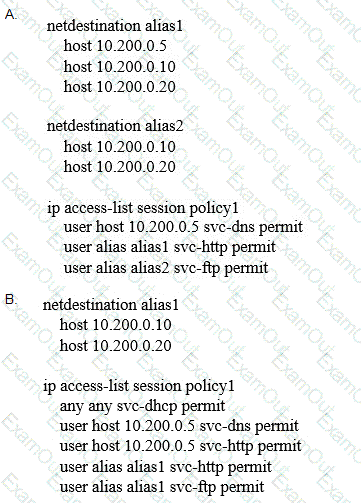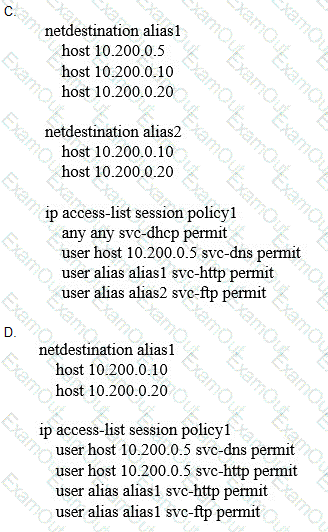Refer to the exhibits.
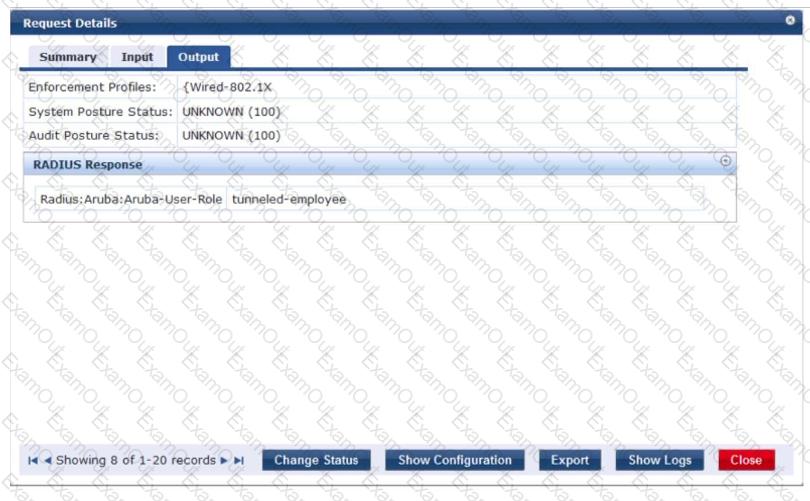
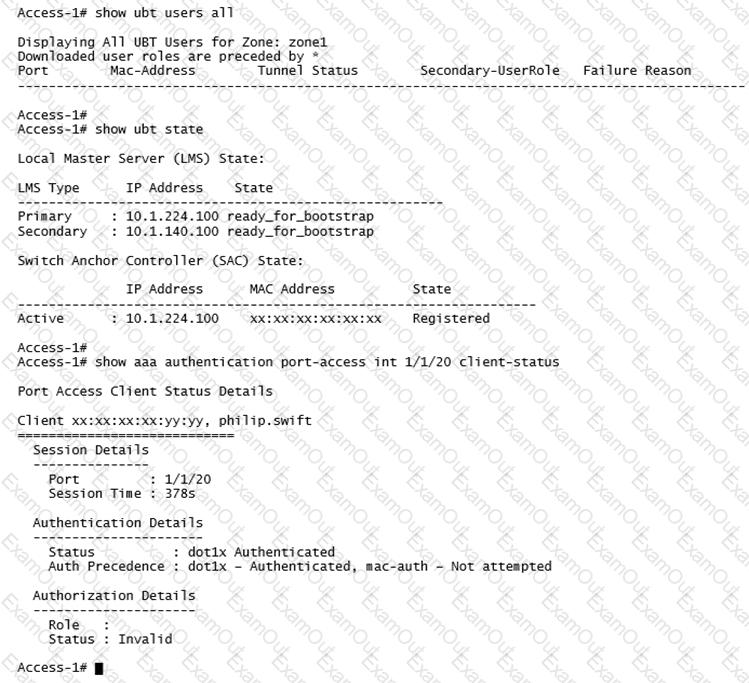
A network administrator deploys User Based Tunneling (UBT) in a corporate network to unify the security policies enforcement. When users authenticate with 802.1X, ClearPass shows Accept results, and sends the Aruba-User-Role attribute as expected. However, the AOS-CX based switch does not seem to build the tunnel to the Mobility Controller (MC) for this user.
Why does the switch fail to run UBT for the user?
Refer to the exhibits.
Exhibit 1
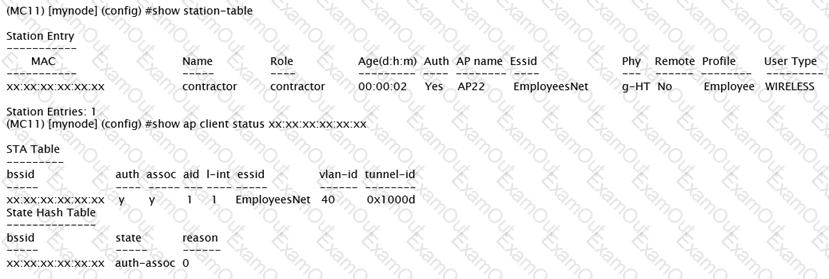
Exhibit 2

Exhibit 3

A network administrator wants to allow contractors to access the corporate WLAN named EmployeesNet with the contractor role in VLAN 40. When users connect, they do not seem to get an IP address. After some verification checks, the network administrator confirms the DHCP server (10.254.1.21) is reachable from the Mobility Controller (MC) and obtains the outputs shown in the exhibits.
What should the network administrator do next to troubleshoot this problem?
Refer to the exhibit.
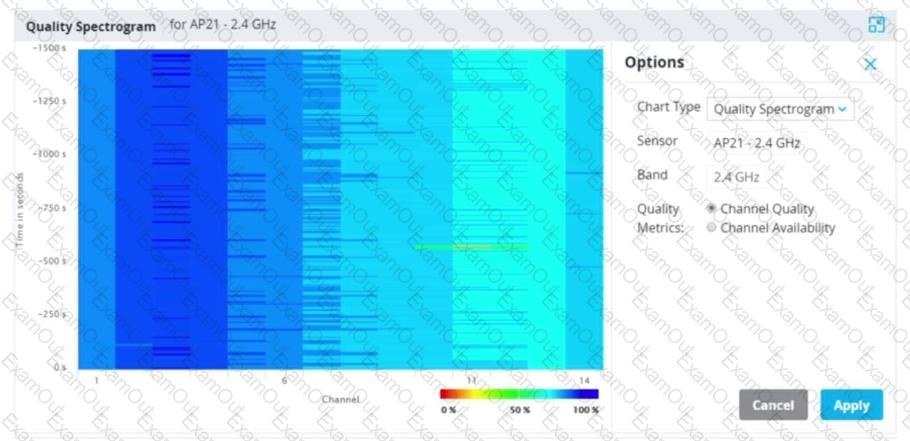
Based on the output shown in the exhibit, which channel offers the highest quality?
Refer to the exhibits.
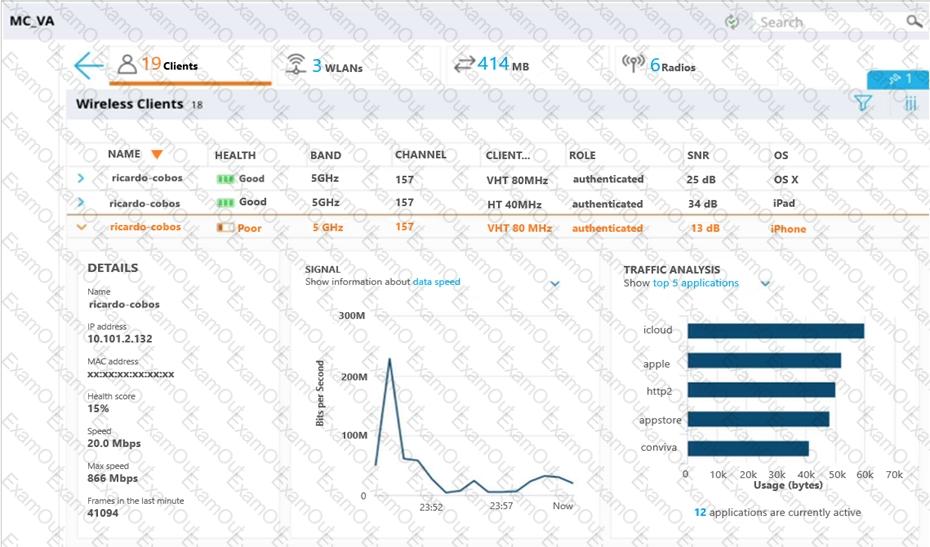
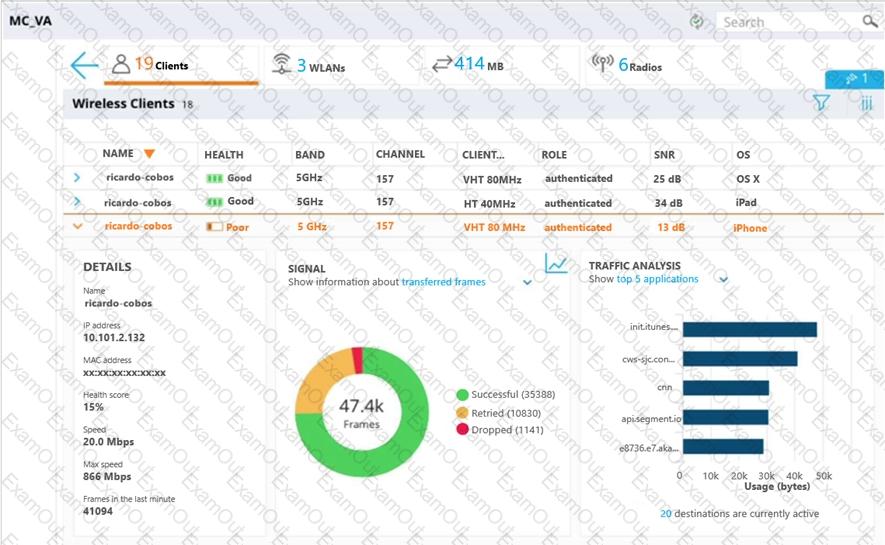
A user reports slow response time to a network administrator and suggests that there might be a problem with the WLAN. The user’s phone supports 802.11ac in the 5 GHz band. The network administrator finds the user in the Mobility Master (MM) and reviews the output shown in the exhibit.
What can the network administrator conclude after analyzing the data?
A company with 50 small coffee shops in a single country requires a single mobility solution that solves connectivity needs at both the main office and branch locations. Coffee shops must be provisioned with local WiFi internet access for customers.
The shops must also have a private WLAN that offers communication to resources at the main office to upload sales, request supplies through a computer system, and make phone calls if needed. In order to simplify network operations, network devices at the coffee shops should be cloud managed.
Which technologies best meet the company needs at the lowest cost?
Refer to the exhibit.
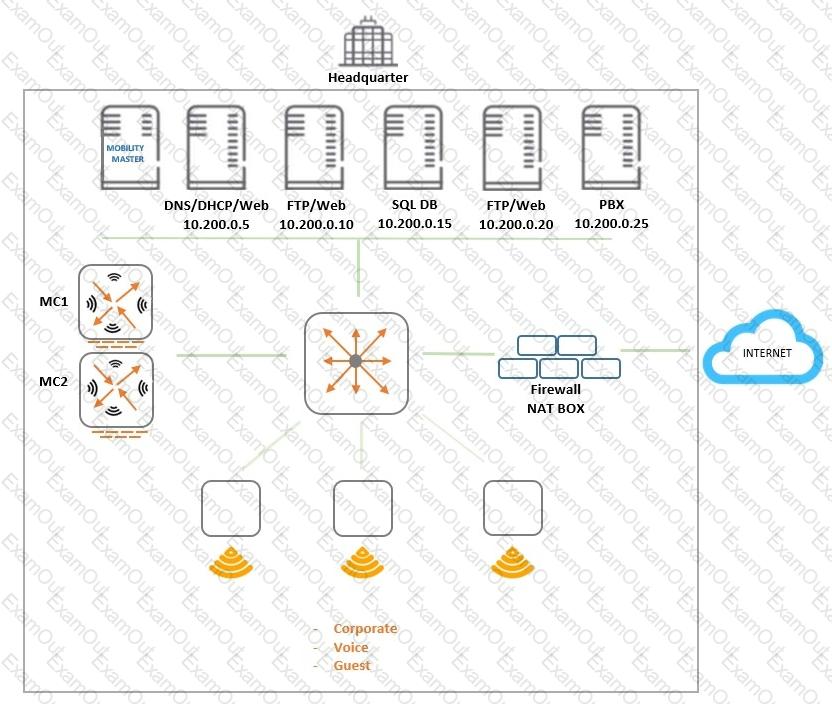
An organization provides WiFi access through a corporate SSID with an Aruba Mobility Master (MM) - Mobility Controller (MC) network that includes PEF functions. The organization wants to have a single firewall policy configured and applied to the employee role.
This policy must allow users to reach Web, FTP, and DNS services, as shown in the exhibit. Other services should be exclusive to other roles. The client NICs should receive IP settings dynamically.
Which policy design meets the organization’s requirements while minimizing the number of policy rules?
